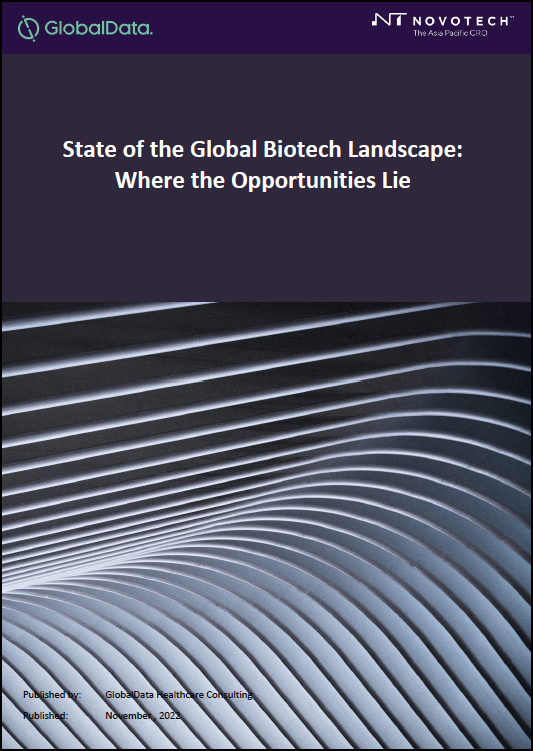
Last month, a new biomarker for Parkinson’s disease was discovered which showed that it develops even earlier than anticipated. Currently, patients with Parkinson’s disease have limited treatment options with no options available to slow disease progression.
There are a number of unmet needs for patients with Parkinson’s including effective treatment for motor symptoms such as levodopa-induced dyskinesia, off-episodes, gait and imbalance. All current treatments are limited to those providing symptomatic relief with a ‘huge vacuum’ in disease-modifying therapies (DMTs).
However, novel therapies which are in Phase II and III trials are looking to tackle some of these ‘vacuums’ including treatment of motor symptoms. If these therapies prove successful, it could revolutionise treatment for patients.
Dr Rajesh Pahwa, director of Parkinson Foundation Centre of Excellence at the University of Kansas Medical Centre, says that he is hopeful for some success in the field soon.
“These are really very exciting times,” Pahwa says. “Looking at neurodegenerative conditions and the number of different trials that are going on with different mechanisms of action.”

US Tariffs are shifting - will you react or anticipate?
Don’t let policy changes catch you off guard. Stay proactive with real-time data and expert analysis.
By GlobalDataThe biggest ‘gap’ is a lack of disease-modifying therapies
Annovis Bio is currently running a Phase III trial evaluating the safety, efficacy and tolerability of its pipeline DMT buntanetap tartrate (NCT05357989). The six-month prospective, randomised, double-blind, placebo-controlled trial investigating two different doses of the drug vs placebo in patients with early Parkinson’s disease. The trial is due to end in December 2023.
The drug works by inhibiting the production of neurotoxic proteins derived from the amyloid precursor protein (APP) and tau. Due to its mechanism of action, it also provides an opportunity to treat early Alzheimer's disease.
Christie Wong, a senior healthcare analyst for GlobalData says that if the candidate proves efficacious at the end of the trial, it could be the first α-synuclein-targeting product on the market, making a huge change in patient care. GlobalData is the parent company of the Clinical Trials Arena.
“In earlier clinical trials, butanetap was shown to reduce the levels of α-synuclein, and different toxic proteins such as tau protein tangles involved in neurodegenerative disorders,” Wong says. “Since extensive research has shown the role of α-synuclein in Parkinson’s pathogenesis and neurodegeneration, companies have been developing various first-in-class programs that could target this pathway. Should buntanetap demonstrate good efficacy and safety profiles, the drug could be the first α-synuclein-targeting product to enter the market.”

Dr Ted Dawson, director of the Institute for Cell Engineering at John Hopkins, says that ASYN inhibitors could be the answer for slowing disease progression but says he wants to wait for the trial results to decide whether these will be impactful for patients.
“If there was a drug that could interfere with the pathologic formation of these proteins then yes it would be beneficial,” Dawson says. “There's a great need for agents that target ASYN.”
Roche’s prasinezumab is coming to the end of a Phase IIb clinical trial in September 2024. Prasinezumab is another α-synuclein-targeting product which GlobalData predicts to be one of the highest performers if approved. The Phase IIb randomised, double-blind, placebo-controlled, multicentre trial (NCT04777331) is testing the efficacy and safety of the intravenous drug in participants with early Parkinson's.
“I consider all the synuclein therapies in a bucket,” Pahwa explains. “If one makes it, the others are very likely to make it and if one fails, the others might have less likelihood of being successful.”
However, Pahwa adds that he has higher hopes for prasinezumab due to the trials testing the agent for longer in patients.
“Roche has a lot more data out there; they have four-year data and the data is positive,” Pahwa adds. “Annovis’s double-blind treatment duration will be up to six months. I really think that a six-month study, is going to be a major limitation. It is very difficult to show in six months, that there is change in clinical progression unless your drug is extremely effective.”
Patients suffering off-episodes currently have limited treatment options
Alexza Pharmaceuticals is developing staccato apomorphine which is in a Phase II trial (NCT05979415). The interventional, randomised, double-blind, placebo-controlled, parallel assignment and treatment study is evaluating the safety and efficacy of the aerosol drug in Parkinson’s disease patients suffering from episodes. The trial is due to be completed in February 2024.
Other sponsors already market apomorphine but this is a non-subcutaneous form of the drug, making it easy for patients who may have tremors to administer their medication.
“The current treatments are injections so if the aerosol administration made the route of administration easier for patients who are experiencing these off periods then it could offer a really significant benefit.” Dawson explains. “In that regard, it could be an important advance for the management of motor fluctuation.”

In contrast, Pahwa says that for this version to succeed, the aerosolised version must have less side effects than the sublingual apomorphine which resulted in it being pulled from the market. “If it has the benefits of the subcutaneous, there would be a market for it, as long as they had studies where an antiemetic was not used, and they didn't have major issues orally.”
The drug acts by targeting dopamine D1 and D2 receptors, and decreased dopamine levels contribute to abnormalities in dopamine-related neurotransmission. It mimics dopamine functioning and acts in place of dopamine by directly stimulating the receptors in nerves in the brain to control movement.
Patients with motor fluctuations currently have few effective treatments
Cerevel Therapeutics is running four trials of its candidate tavapadon in the TEMPO series. TEMPO-1 (NCT04201093) is a Phase III, fixed-dose trial for patients with early Parkinson’s disease, ending in September 2024. TEMPO-2 is a Phase III trial testing the drug at flexible doses in patients with early disease. The trial is due to be completed in October 2024. TEMPO-3 (NCT04542499) is a Phase III flexible-dose, adjunctive therapy trial in Parkinson’s patients suffering from motor fluctuations. The trial is scheduled to end in March 2024. TEMPO-4 is an open-label trial (NCT04760769) due to end in 2026. TEMPO-1 and TEMPO-2 use a primary endpoint measuring the change in motor symptoms, while TEMPO-3 uses a primary endpoint measuring reduction in time without troublesome dyskinesia.
Tavapadon is an oral drug which targets dopamine D1 and D5 receptors. Inappropriate stimulation of D1 and D5 receptors results in the impairment of cognitive functions. The drug candidate enhances the agonist-stimulated receptor signals to raise the levels of extracellular brain acetylcholine (ACh), improving cognitive function.
One concern with D1 receptors is the exacerbation of non-motor adverse events (AE) they cause including orthostatic hypotension which can lead to unexplained falls, light-headedness, cognitive impairment, fatigue and more symptoms for Parkinson’s patients upon standing.
Dawson says that for another D1 targeting drug to hit the market, it must not exacerbate these kinds of events. “The clinical trial is really going to have to show that this doesn't exacerbate orthostatic hypotension that patients with Parkinson's disease are prone to,” Dawson explains.
However, Wong says that other experts she has spoken with do not have these concerns for tavapadon at the moment. “If tavapadon demonstrates efficacy in the ongoing trials, along with the improved safety profile not causing compulsive behaviours and sleepiness, then it could be useful for a large patient population – as a monotherapy in early Parkinson’s patients and as an adjunctive therapy in advanced stage Parkinson’s patients,” Wong explains.
“Dopamine agonists have this baggage of side effects, whether it's compulsive disorders, sleepiness, hallucinations, dyskinesia. If the clinical data shows that tavapadon causes very little sleepiness, dyskinesia or radial compulsions, that would be a plus in the dopamine agonist market,” Pahwa agrees.
Remodelled diabetes treatments are also showing efficacy
Glucagon-like peptide 1 receptor (GLP-1R) agonists which were originally developed for diabetes but are being used as obesity medications are now being repurposed as DMT for Parkinson’s disease. University College London is conducting a Phase III trial (NCT04232969) which will be completed in June 2024. The trial is investigating Baietta (exenatide) once weekly over two years as a potential DMT for Parkinson's.
“There are readouts coming out for lixisenatide, exenatide, semaglutide,” Dawson adds. “Data presented already looks quite encouraging.”
“As of today, with the little data we have, I think it's an exciting mechanism of action,” Pahwa adds. “I think it is something we should look at.”




